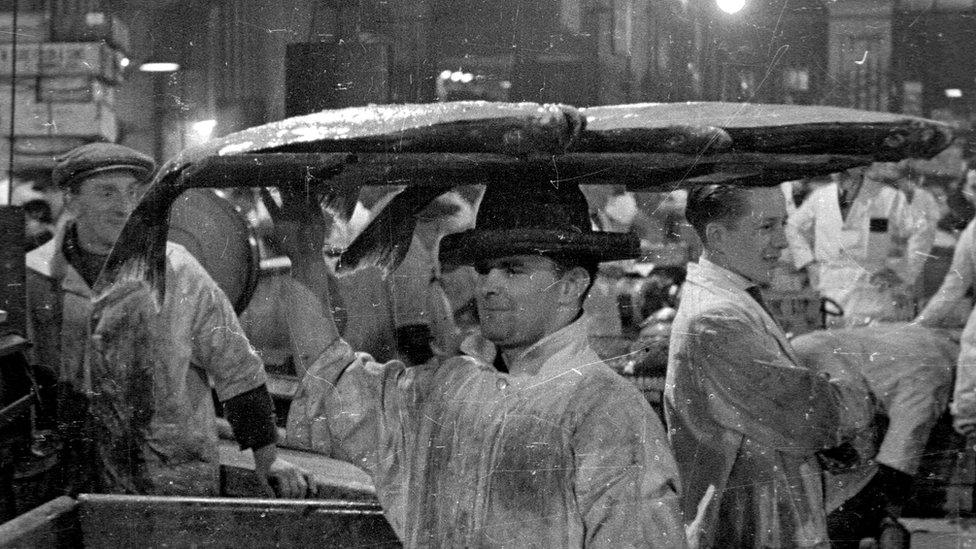The curious contests no longer on racers' radars
- Published

'Where did you get that hat?" Basket racers stay level-headed
London has always been a city where the British competitive spirit has thrived: three Olympic Games, the Boat Race, the London Marathon.
Wembley, Twickenham and Wimbledon are all synonymous with sporting effort.
But the capital has also been host to some contests that might appeal to those of us who are not of the traditional sporting persuasion.
Should any of the following competitions be resurrected, people whose talents are "sitting on chairs" or "wearing a hat" might eventually get their moment on the podium.
'A manly sport'
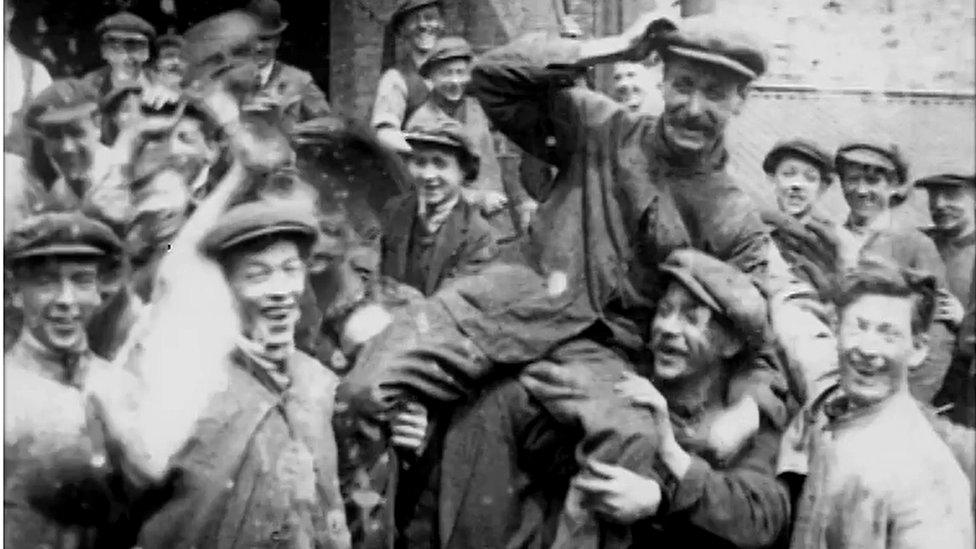
Mr Moses sank 5,894 rivets in nine hours
Possibly the only antonymic competition that exists, riveting contests emerged during World War One, when the shipbuilding industry assumed a crucial role. What better to inspire the workforce than a little healthy rivalry?
In 1918 workers tried to set a new world record for the most rivets fastened in nine hours. A London team set the pace with 4,276 - but victory went to a W Moses of Vickers Ltd, Barrow-in-Furness, who sank 5,894 rivets in the same time.
Despite his achievement, his world record was beaten later that year by a John Moir at the Workman Clark Ltd shipyard in Belfast, who managed an astonishing 11,209 rivets.
"His peak hour was his seventh, with 1,409 rivets, an average of nearly 23 per minute," said Guinness World of Records - and his record still stands.
The ethos spread across the pond - Mr James E Collins, editor of the weekly publication of the Emergency Fleet Corporation, toured all shipyards in the New York and Philadelphia districts to ascertain the effect upon workers by prizes.
"I can testify from personal observation that the riveting contest has had the very finest influence on the shipyard workers, particularly riveters.
"The idea of popularizing riveting as a manly sport was an inspiration; it not only 'keys up' riveters, but it makes them feel that the public realizes the importance of their work." he said.
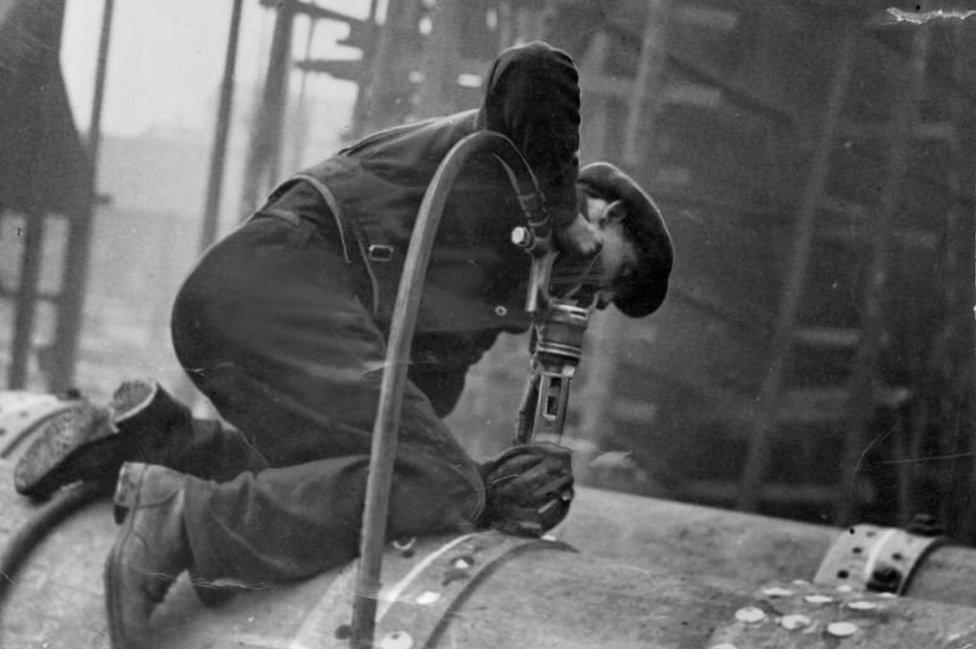

Nothing to sniff at
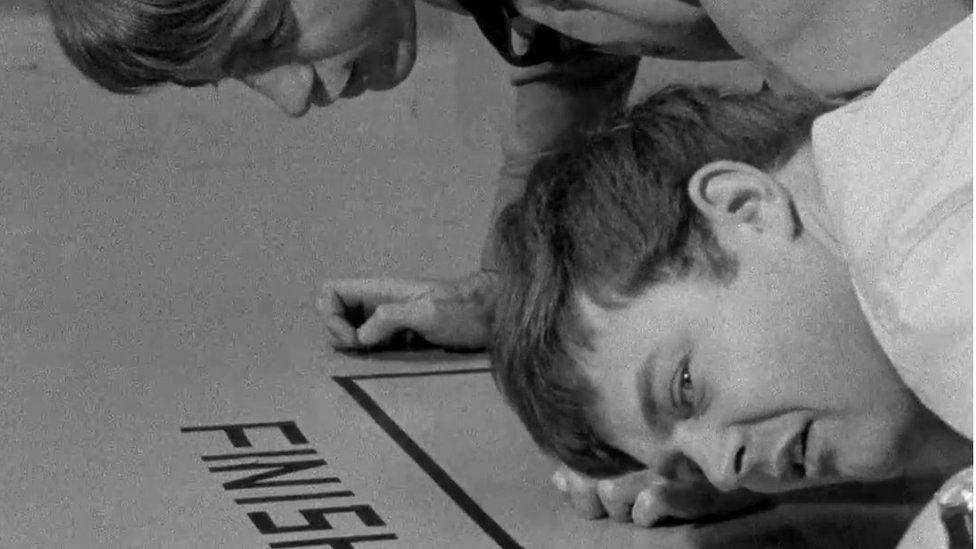
Gordon Burns and colleague regretting their life choices
And speaking of riveting - pea pushing (using one's nose) enjoyed a moment in the spotlight in 1969. A group of students gathered in St Martin-in-the-Fields to push peas on behalf of charity Help the Aged. Presumably the participants raised money in some way, rather than the aged being helped by the act of snuffling a legume along the pavement.
And it was an activity not just for unknown students - a pre-Krypton Factor Gordon Burns got on to the studio floor at UTV to nudge a pea to the finish line (it was recorded for posterity and is available to watch, external). It is as fascinating as it sounds.
A mere eight days later, the national pea pushing derby was held in Walton-on-Thames.
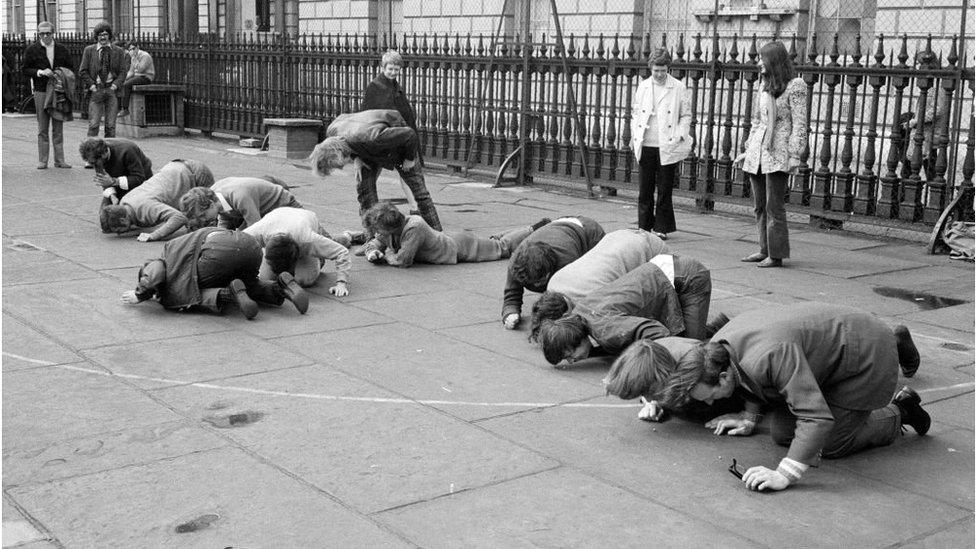
'Does this pavement smell funny to you?'

The job had been described as "pen-pushing" but Sheila misread the spec

Featherheads
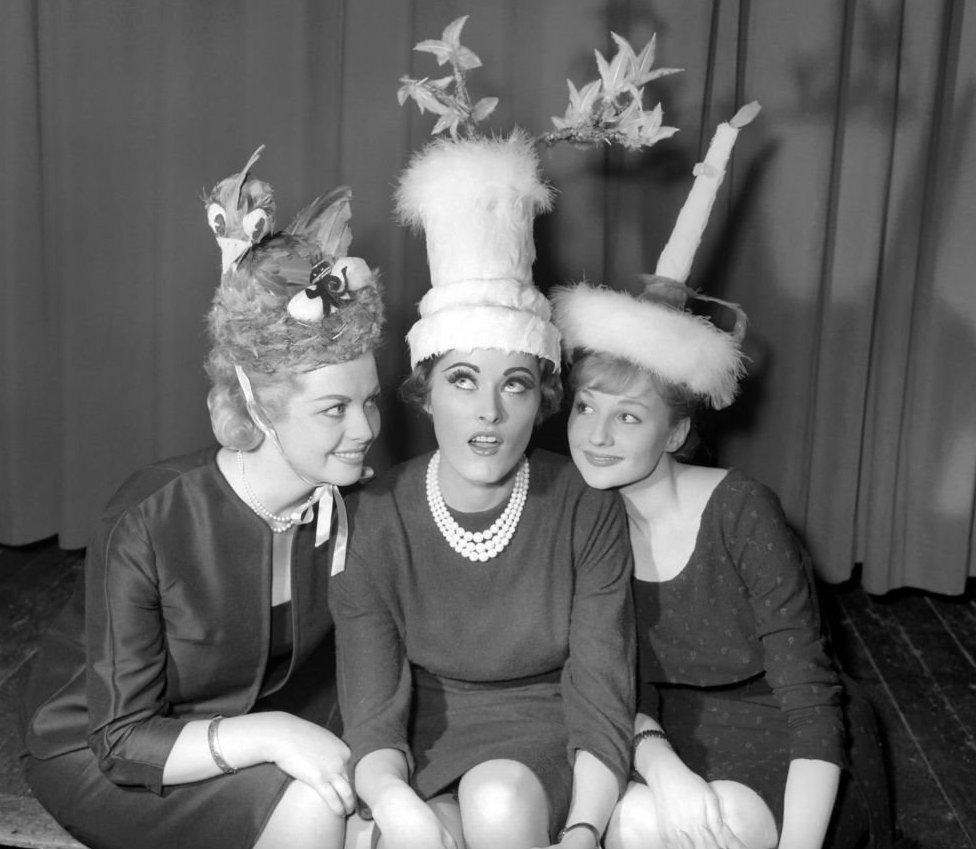
Three entrants in the "zany hats" category: Cathy Shane in One of the Family, Joan Martin in Vase of flowers, Elizabeth Tree in Nightcap
Sixty years ago, ladies in possession of a creative bent, a ready supply of chicken pluckings, and a head could enter the annual festival of poultry feather hats competition.
Held at the prestigious Cafe Royal on Regent Street, the 1963 event was described as "buzzing with excitement" as contestants, all amateurs, submitted their creations in one of two categories - fashion hats and zany hats.
Judged by milliner Otto Lucas - who made hats for clients such as Greta Garbo and Wallis Simpson - the winning designs (or "remarkable creations of feathered wonders") were featured at the International Poultry Show held at Olympia.
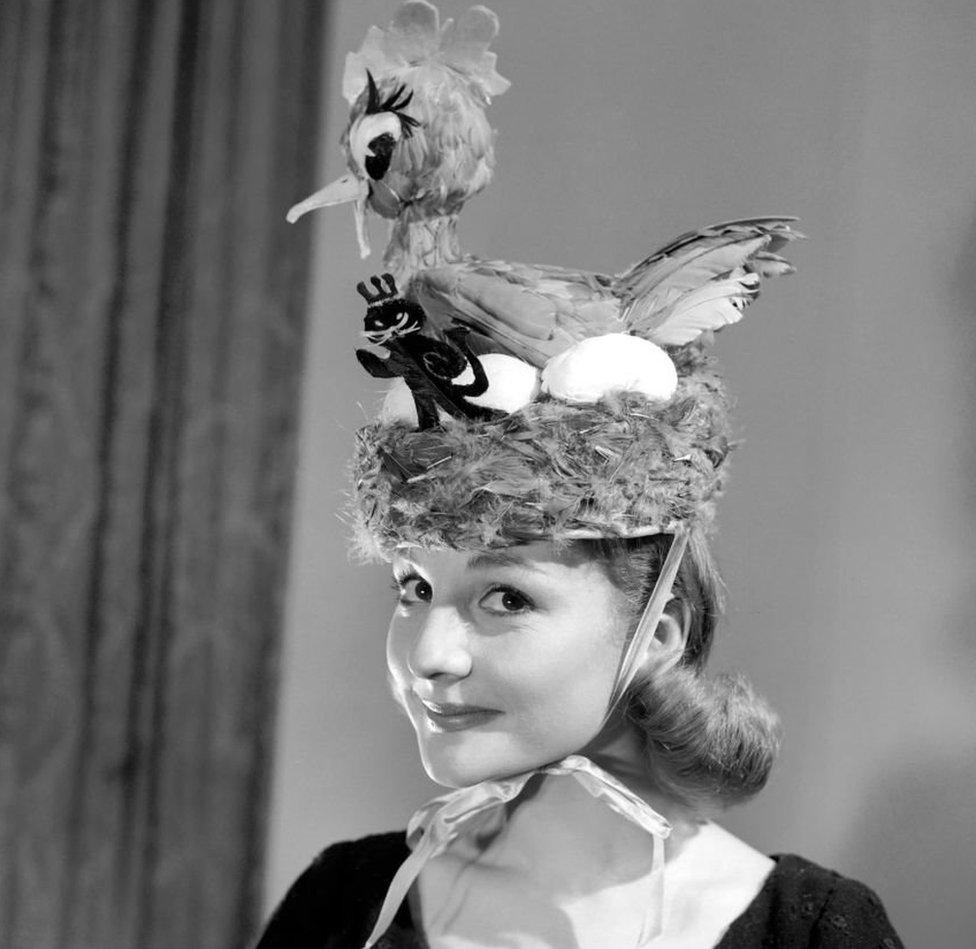
This hat, modelled "with grace and poise" by creator Elizabeth Tree, "exudes charm and playfulness, capturing everyone's attention with its whimsical design"
Write-ups from the time are almost as ornate as the headpieces: "Her hat exudes charm and playfulness, capturing everyone's attention with its whimsical design. As she models it with grace and poise, Elizabeth becomes a symbol of creativity and individuality.
"It serves as a reminder that fashion knows no boundaries when it comes to self-expression, allowing individuals to showcase their unique style through odd yet fascinating clothing choices."
Quite.
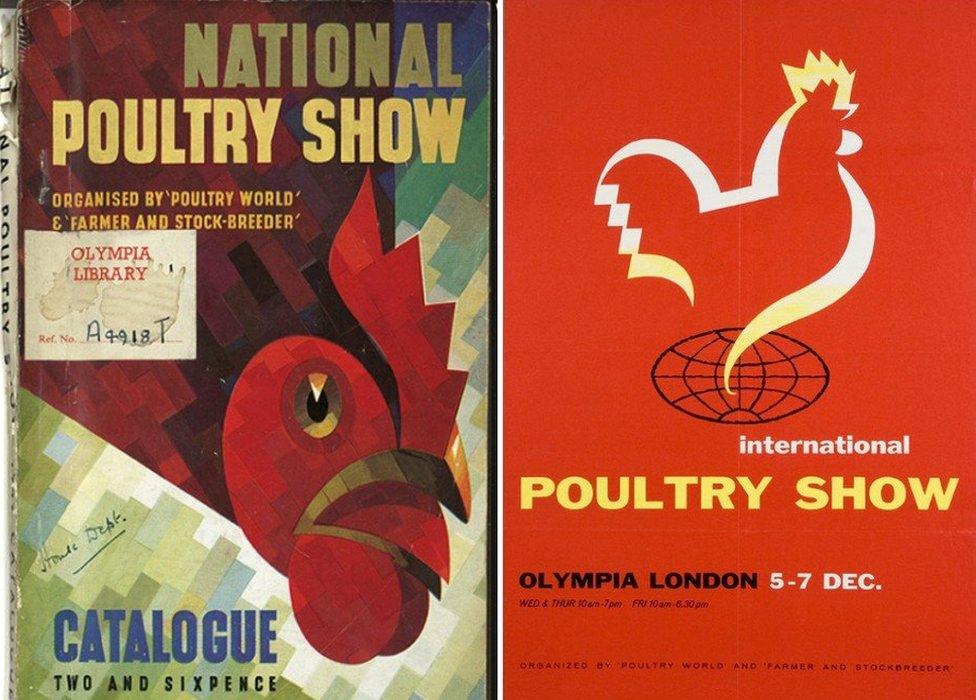
The feathers! The beady eyes! The glamour!

'Just see if you can catch his eye'
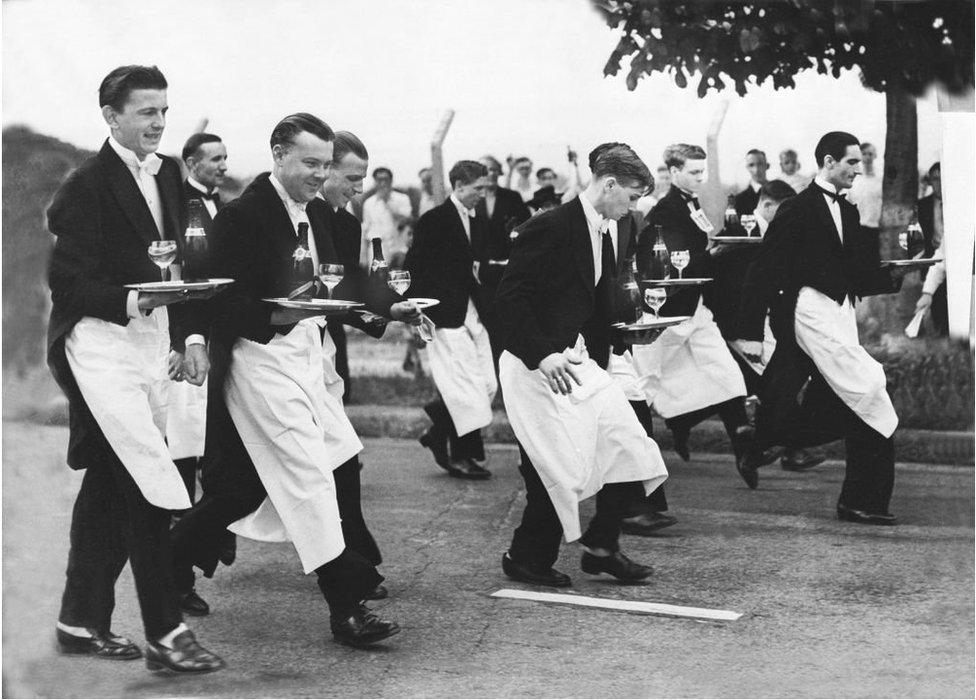
The waiters' race is believed to have originated in France, with the best-known taking place in Paris (évidemment), and traditionally taking place on Bastille Day (plus évidemment).
Race website waitersrace.com said: "Parisian cafes were known over the world for their high service quality, and the Parisian waiters had largely contributed to attract millions of tourists. It was time for the city to pay tribute and organise an event where its waiters would be offered a great opportunity to prove their agility and professional skills out of their cafes."
By the early 1900s, waiter races were taking place across Europe, and continue to do so.
The Times newspaper ran a piece headlined "Waiters show their paces" on 11 July 1955: "The waiters' race, with 70 or more entrants in the full uniform of their calling - evening dress, short white jacket, or native Indian or Chinese costume - began with a circuit of Soho Square and ended at the corner of Frith Street and Old Compton Street.
"Each waiter carried on a tray a half-bottle of champagne and two glasses.
"The event was really won by some of the photographers who ran beside and among the competitors; but of the official entrants the first home was Robert Taylor, a young waiter at a Catford cafe; the second was Toni Rigotti, an Italian who works in Cranborne Street; and the third was a Greek, Sawa Toufexis, from a well-known restaurant.
"A prize for the oldest competitor went to C Salvatori, aged 75, a Bond Street waiter."
In London, the Soho Society still holds one as part of its summer fete. Entrants must wear proper waiter uniform and carry a tray bearing a napkin, a half bottle of champagne and a champagne glass. They must also ignore spectators doing that universal hand scribble-wiggle that across the world means "may I have the bill?"
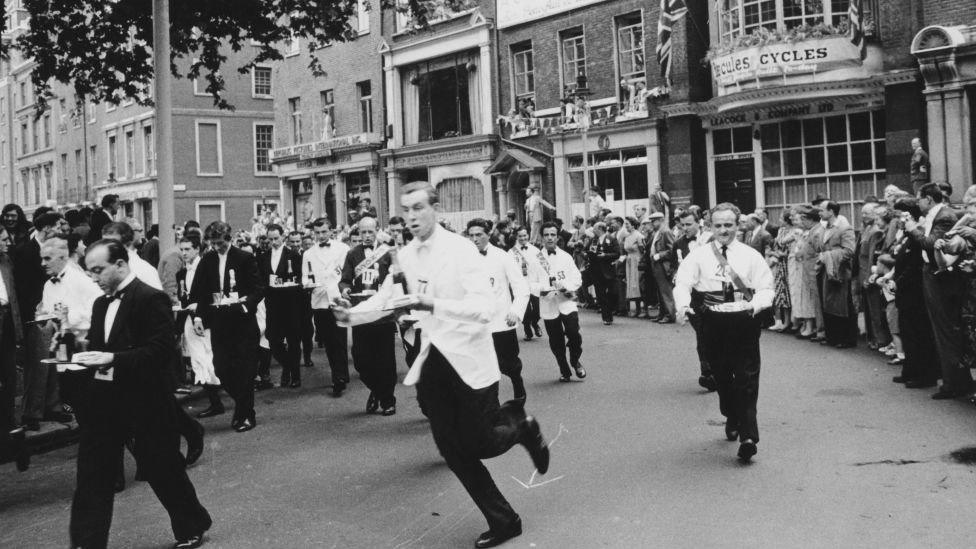
Soho, 1955. Some participants seem keener than others

Basket cases
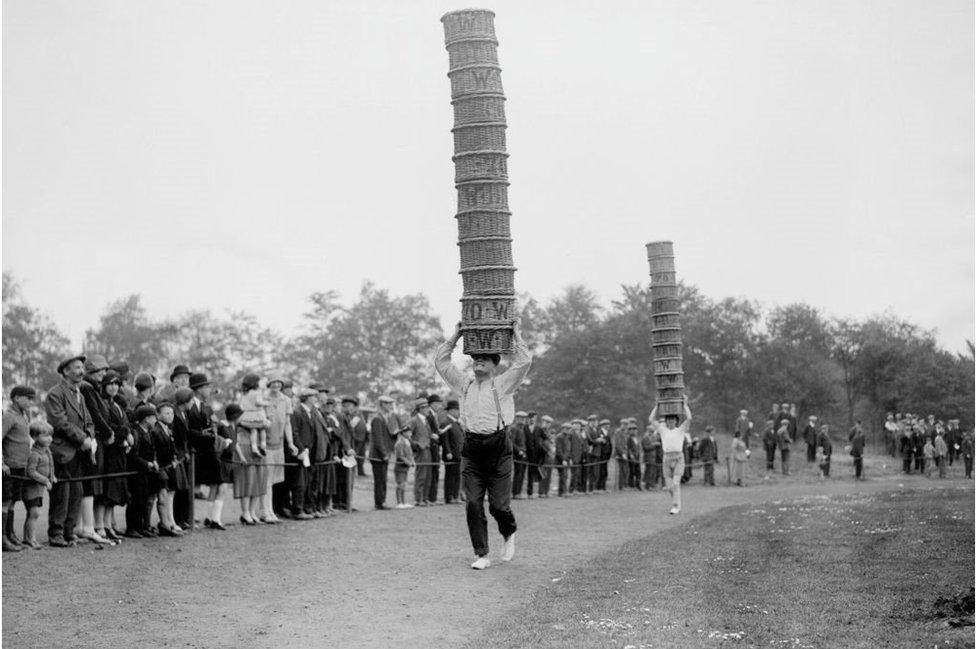
Spectators line the course to cheer on a pair of Billingsgate porters carrying a dozen fish baskets on their head
Porters at Covent Garden and Billingsgate balanced baskets on their heads as part of everyday life, conveying fruit, flowers and fish around their respective markets.
A column of 12 wicker receptacles was the standard for the workplace - and most porters could manage to balance them almost indefinitely, a 1904 edition of the Daily Mirror reported.
The West London Observer, though, interviewed a few hardened porters. Bill Warwick thought porters had become "softies".
"Twelve is nothing. Jim Stanbury ran for half a mile with 22 baskets on his head."
The Daily Herald also commented on the tradition alongside the picture below: "In a race, it's a different matter, and even Albert Bailey of Highbury, London, basket race winner in the event held in 1939, came to a mishap.
"With Bailey in photo are Edward White of Blackheath (left) and Johnny Hopkins of Finsbury Park."
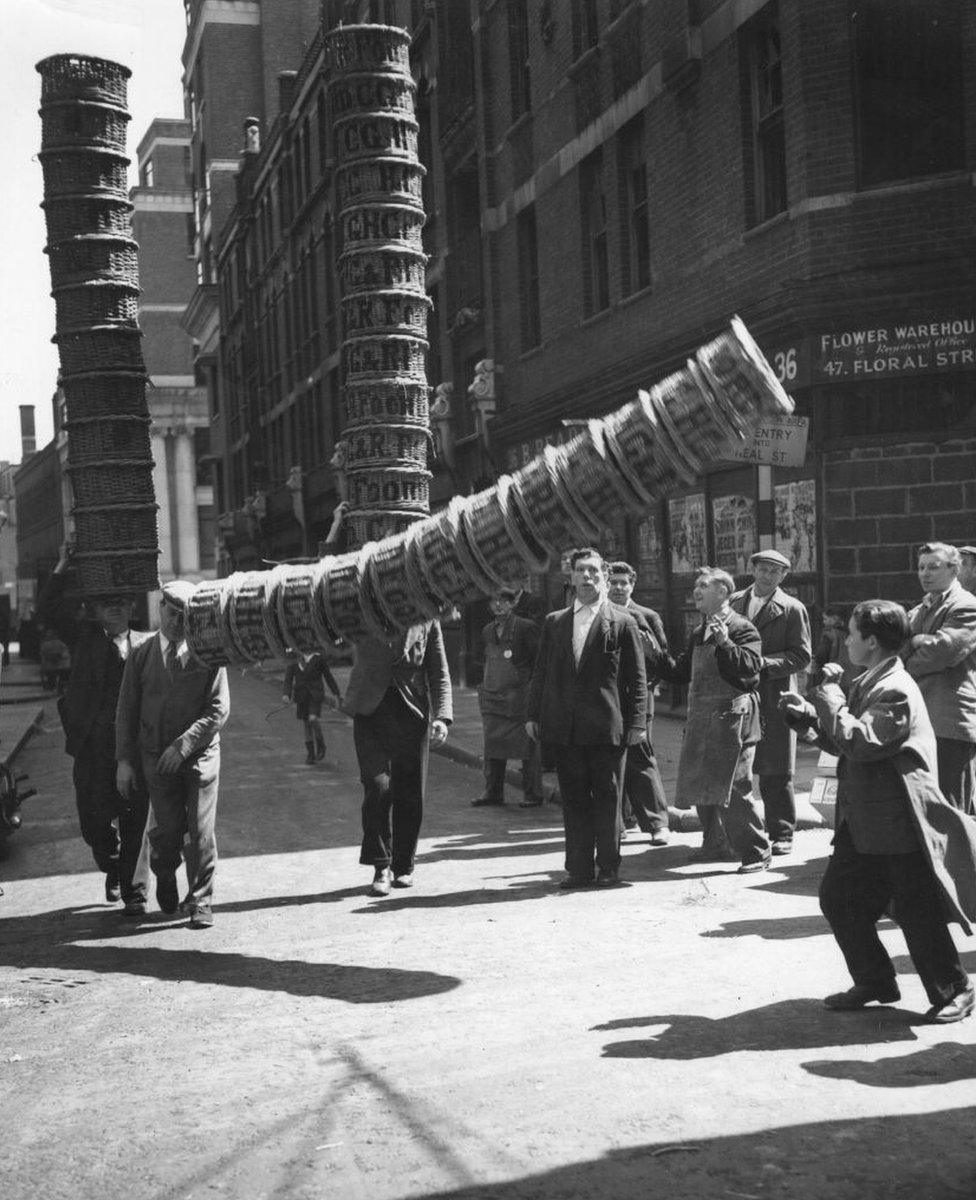
Albert Bailey "came to a mishap" the Daily Herald reported, as the seasoned competitor tried to score 12 goals with one header

And whatever this is
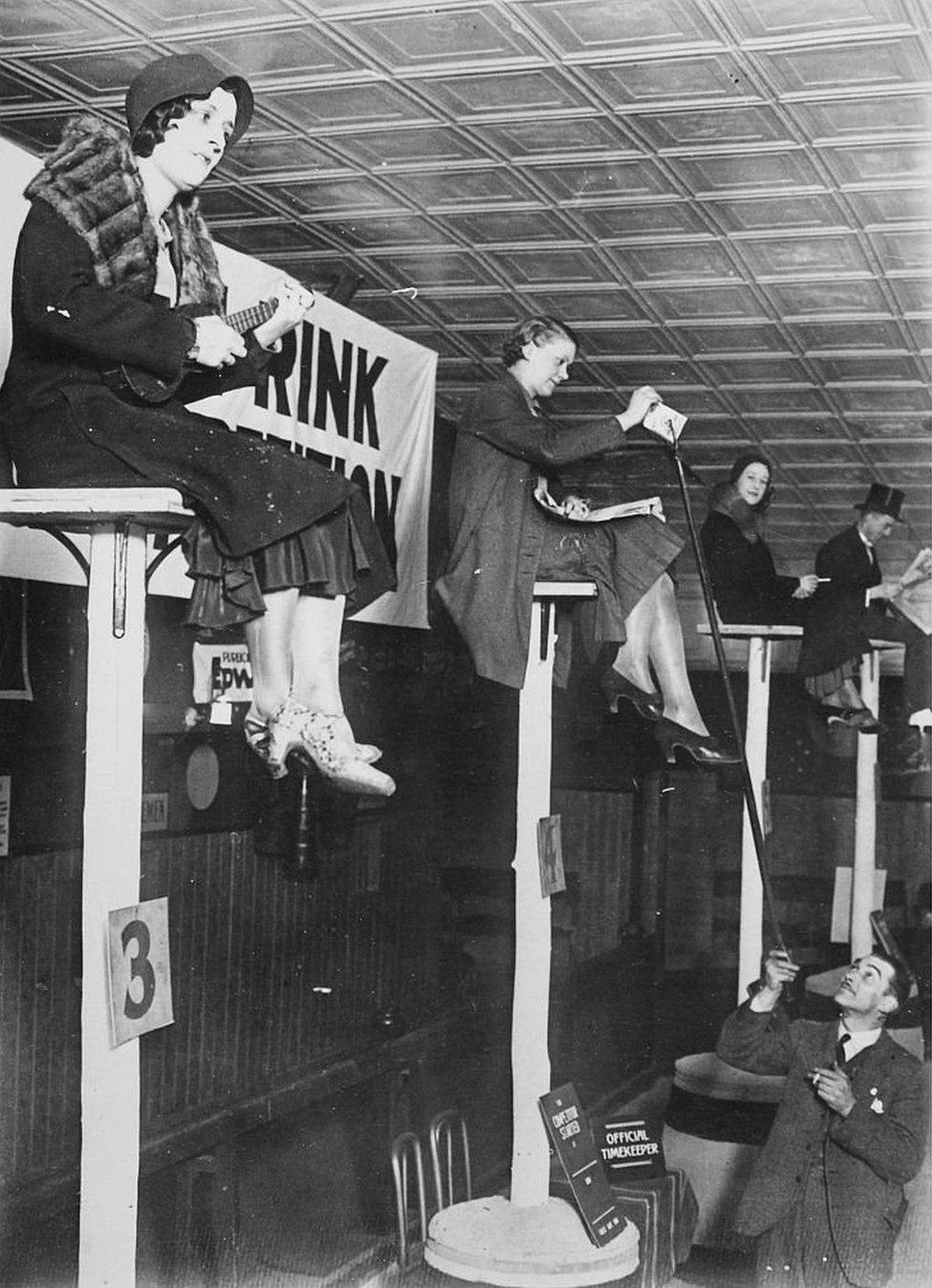
At the far end, Jacob Rees-Mogg wears his casual clothes and enjoys browsing a copy of Smash Hits
And finally - this image is catalogued as "a permanent high chair seating competition in London. About 1930".
There's an official timekeeper, one of the sitters plays a stringed instrument while another is handed a box on a stick and a third watches, cigarette in hand.
No other information seems to exist about this tournament, but here's hoping Los Angeles 2028 includes it in its Olympic programme.

Listen to the best of BBC Radio London on Sounds and follow BBC London on Facebook, external, X, external and Instagram, external. Send your story ideas to hello.bbclondon@bbc.co.uk
Related topics
- Published23 July 2023

- Published30 December 2021
